Alternative to teak decking: Which decking for whom? Large market overview 2022
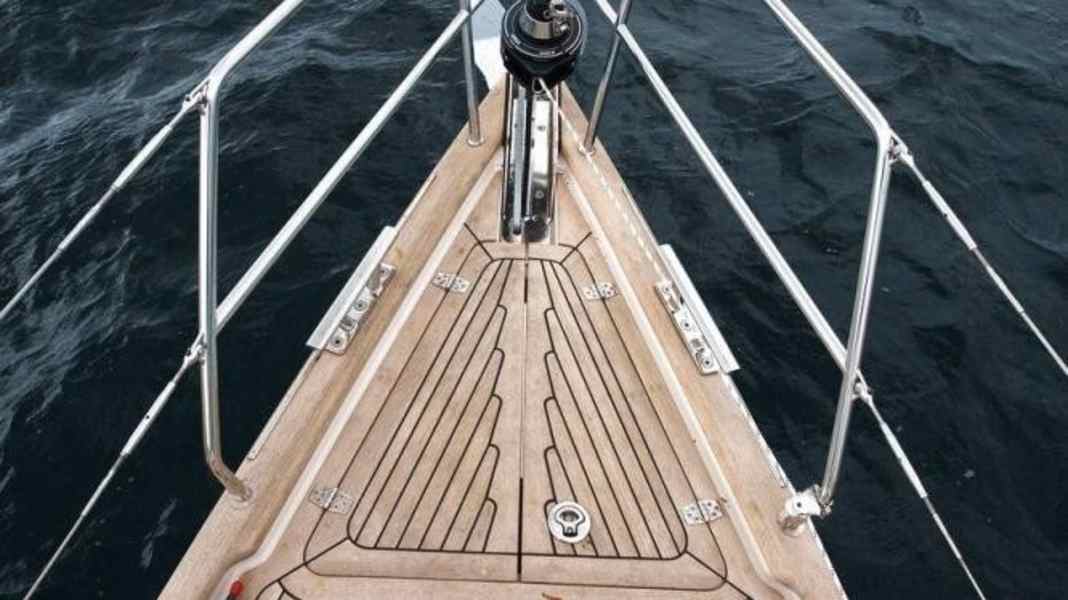
For a long time, bright, flawless decks made of real teak were considered the kings of deck coverings. In fact - as we showed in the first part of the teak special - there are still many reasons in favour of using this classic material today. On the other hand: lower costs, less maintenance, ecological awareness and a durable, consistent colour are also possible wishes of owners. A growing market has teak-look materials available for them. Visually, the deck coverings made of plastic, cork, composite or hard foam are mainly intended to imitate the classic teak decking, in some cases with astonishing success.
What alternatives are available
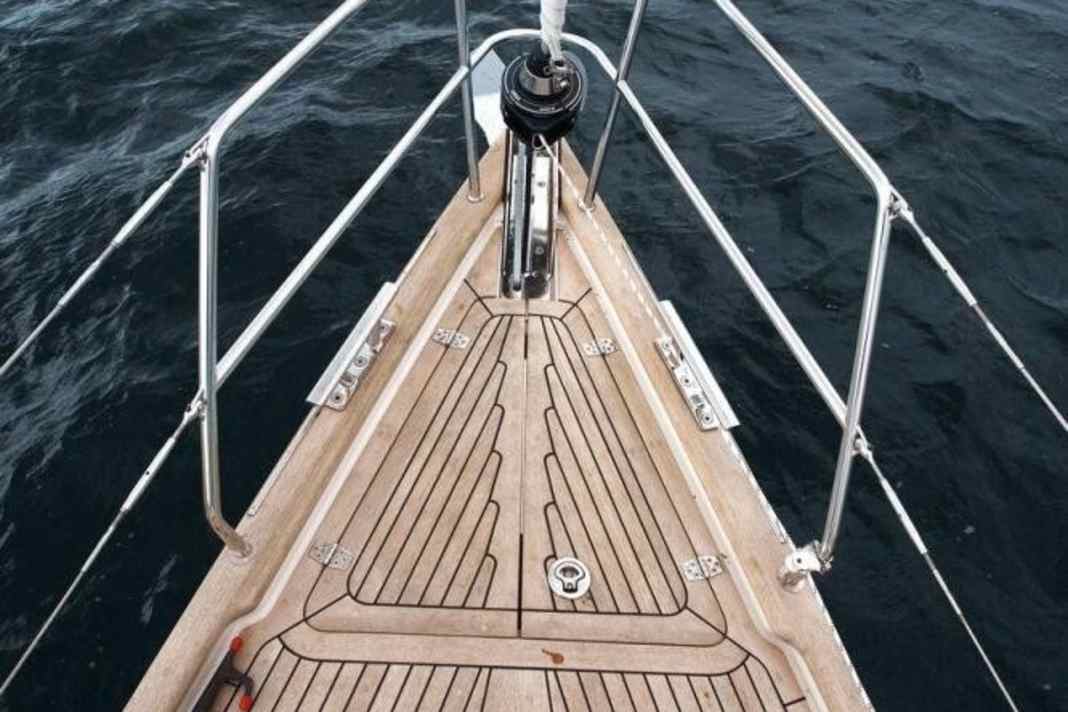





Various manufacturers offer deck coverings made of flexible plastic, also known as synthetic teak. Whether Flexiteek, Permateek, Dek-King or Tek-Dek - the products are very similar and are processed in almost the same way. Almost all of them are available in a version in which the deck mouldings are glued together and laid by the customer and in a professional version for installation by the shipyard.
For self-builders, mouldings are available in rolls in various dimensions (Isiteek, Dek-King, Tek-Dek). With the help of tongue and groove incorporated into the strips, they are joined together with a PVC adhesive, shaped using a deck template and glued to the deck. Joints are already visually incorporated into the planks. Special edge mouldings and wider battens allow reveals or fish to be cut to size for the foredeck. Suppliers also have accessories such as rubbing strakes and handrails made from artificial teak in their range, as well as the appropriate adhesives, cutting tools and deck rollers. You have to reckon with 15 to 20 per cent offcuts when making a do-it-yourself deck.
"If you factor in your own labour time for the installation, it's not exactly cheap," explains Christian Ubben, who manages sales of the Swedish products Flexiteek and Isiteek in Germany. If you don't want to do the work or have two left hands, you can turn to a refit yard or a specialised installation company. Here again, there are two options to choose from: Either you make the deck template yourself, for example from strong packing paper, and then glue the deck covering made by the shipyard. Or the specialists can do the full job, which, however, costs several hundred euros more per square metre.
The big difference between the DIY version and the professional version: in the latter, the individual mouldings are chemically welded together instead of glued. "This makes the seams absolutely watertight and prevents water from penetrating," says Ubben. However, this should also not happen with a thorough DIY approach. Compared to a teak deck that is screwed and grouted, this is a major advantage. The manufacturers also promise that the wood-look plastic is easy to clean: stains do not penetrate the material, which, according to reports from some users, can also withstand treatment with a high-pressure cleaner.
What are the plastic imitations good for?
Plastic teak is significantly cheaper, but feels different
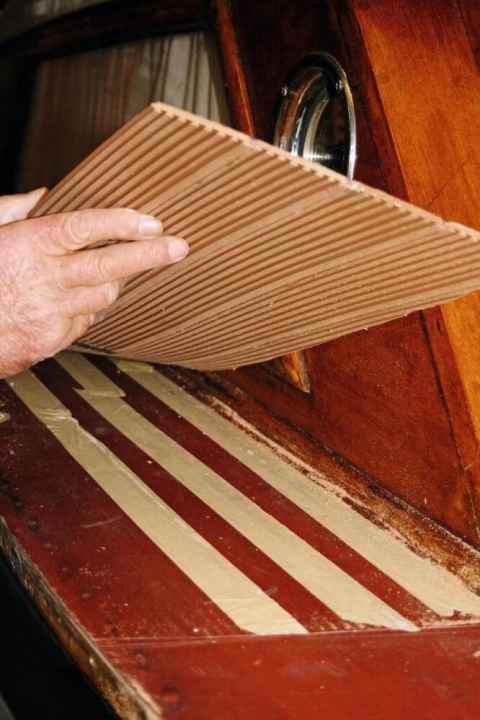
The Sirius shipyard in Plön now swears by artificial teak. "We tried Flexiteek for the first time in 2014," reports Sven Düsener, responsible for purchasing at Sirius. "It was so well received by customers that we've been using it almost exclusively ever since." The imitation teak is now used on nine out of ten yachts that leave the halls in Plön. The price advantage over a teak deck is clear: for a Sirius 310 DS, this costs 8760 euros, while the Flexiteek deck costs just 4240 euros.
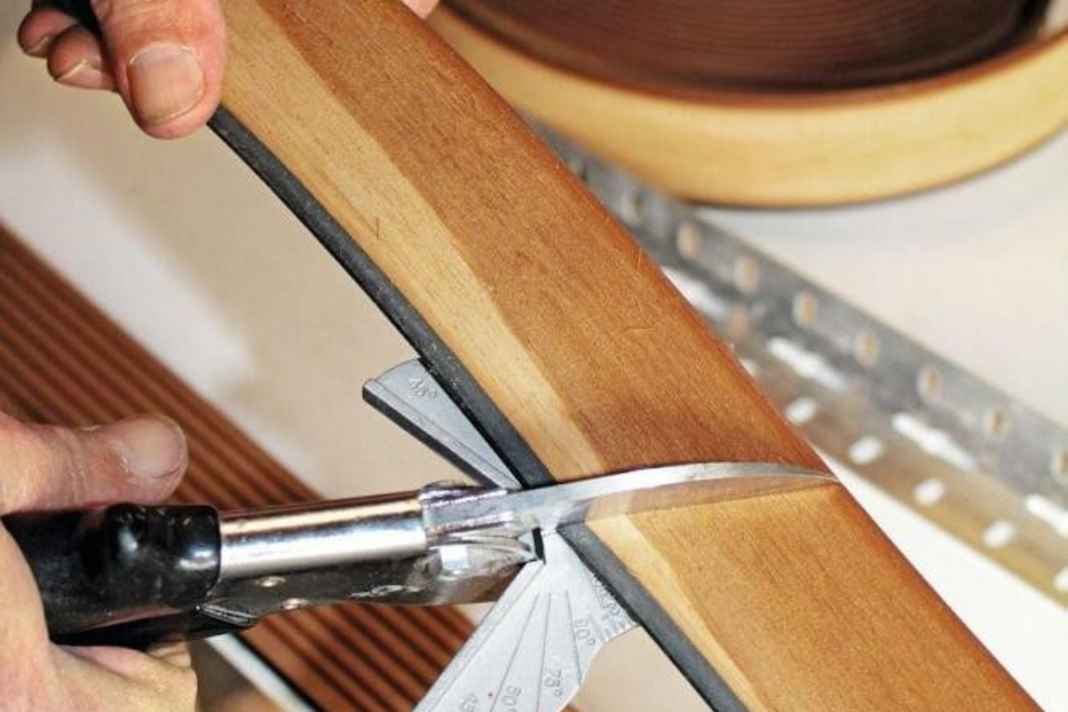





What's more, the future owners can live it up: Flexiteek - like the other art teaks - is available in various strip and joint colours (design configurator on www.ubben-decks.de ). It is precisely the grey shade that teak takes on through its patina that is most frequently requested at Sirius - even though the strength of the imitation teak is that, unlike the natural model, it retains its original colour. In the weathered colour, however, it harmonises best with other original teak components on board.
"Newcomers might mistake it for real teak. This is because sanding it after installation gives it a rough surface that makes it very similar to teak," explains Düsener. And yet: "Real teak is pleasant to the touch, which Flexiteek is not. Compared to wood, it is a dead material. In terms of feel, real teak is luxury." Good arguments in favour of the real wood advocates.
Another disadvantage of PVC flooring is that it heats up quickly and strongly in the sun, which makes walking barefoot uncomfortable or even impossible. To remedy this, so-called microballoons are now being incorporated into the material. The resulting higher air content is intended to make the flooring less hot and cool it down again more quickly.
A good natural product? What speaks in favour of cork
Is cork the better teak?
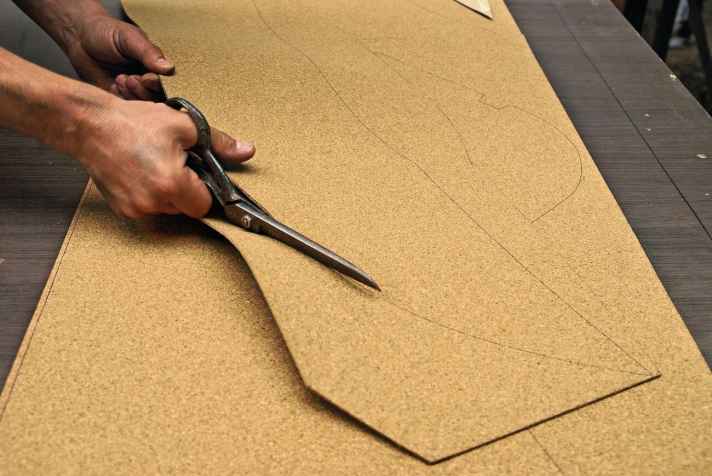
Excessive heating is a problem that cork decking does not have to the same extent due to its nature. The high proportion of trapped air makes them light and thermally insulating. They do not heat up as much in the sun as synthetic teak, have a sound-absorbing effect and feel pleasantly soft underfoot. Cork decking consists of granules of cork tree bark and is pressed with a binding agent - so, like teak, it is ultimately a natural product.
Cork is also available as strips that are glued, grouted and then sanded. It is easy to cut and, like synthetic teak, can be laid on GRP, steel, aluminium or plywood substrates. It is also important here that the remains of the old deck covering are completely removed. Cork decks are also produced and laid by service companies according to a template. The material is considered non-slip and durable and can be easily repaired in the event of minor damage. However, its unique grain, which differs greatly from the grain of a teak deck when viewed up close, makes it less suitable as an imitation.
As a natural product, it is only available in one colour per se. And it requires a certain amount of care: "If you want a cork deck to retain its natural colour, you should rub it with a natural oil at least before and after the season," explains Franz Stapelbroek from the installation company Marinekork. Otherwise, just like teak, it will gradually develop a grey patina. According to Stapelbroek, it does not need to be sealed or varnished.
A soft brush, water and, if necessary, a little washing-up liquid or mild detergent are suitable for cleaning a cork deck. Stubborn dirt can be sanded off both cork and synthetic teak. If a strip deck look is not important to you, cork in mat form could be the right choice. It is commercially available as "Secutred", for example. It can be cut into strips or laid in larger segments, completely without joints - which saves money and labour.
Expensive but good? Esthec composite coating
What are high-end alternatives like Esthec good for?
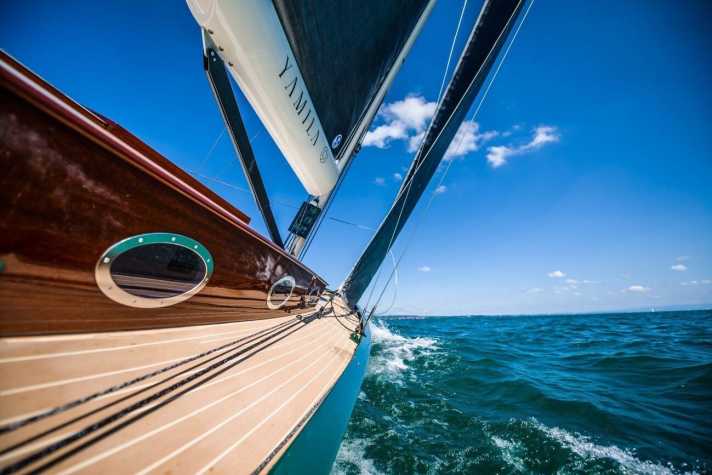
The Dutch plastics manufacturer Bolidt is positioning its Esthec composite decking as the Porsche of teak alternatives. Originally developed for use on luxury yachts and cruise ships, it can now be seen more and more frequently on sailing yachts. "Our aim is not to be another teak imitation, but the better alternative," says Peter Minder, owner of the Swiss Heinrich shipyard, which is one of three distribution centres in Europe.
The composite material is manufactured in segments. 13 different colours from "Champagne" to "Chocolat" are possible, plus five different colours for the joints. They are milled, which makes a wide variety of motifs possible: the classic bar deck look, but also dots, circles, logos - "anything is possible, right up to extra-crazy. There are no limits to the imagination," says Minder. Recently, the manufacturer even added a glow-in-the-dark deck covering to its product range, which recharges itself during the day thanks to its light storage capacity.
Apart from the freedom of graphic design, the advantages of Esthec are said to lie in its high slip resistance, impermeability (no mouldings are glued together) and long service life. In terms of price, however, the noble deck is also comparable to teak - at least. Around 15,000 euros are estimated for the decking of a 30-foot yacht - planned and laid from A to Z, however. Unlike artificial teak and cork, Esthec is not an end customer product, but is intended for installation by certified specialist companies.
Mats in teak layout: Roll out and stick on?
The cheapest option: Roll mats with teak pattern
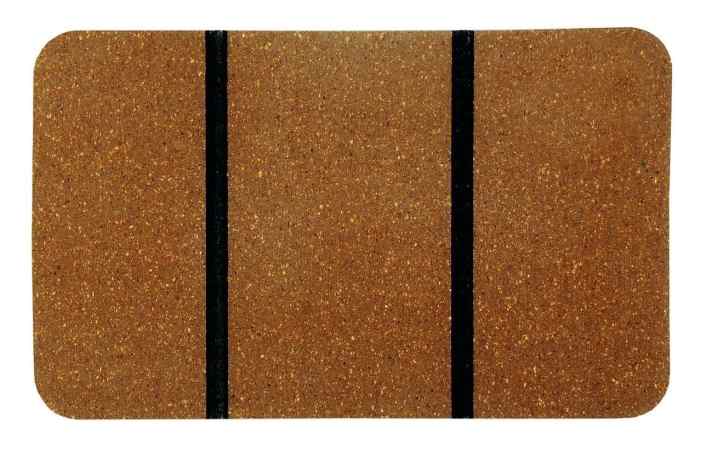
Rolls and mats with a teak layout, such as the "Antislide Marine Floor" from Gisatex or the so-called "Atlanteak" from Treadmaster, are considerably cheaper. They must be cut to size and glued to the deck. However, the (purely visual) planks and joints do not follow the course of the deck, which makes the flooring ideal for straight surfaces such as bathing platforms or cockpit benches.
The same applies to "Faux Teak" from Seadek, a covering made of closed-cell EVA foam consisting of two differently coloured layers. At the customer's request, material is removed from the upper layer to create the joint look. Other motifs and unusual colour combinations are also possible. Thanks to the self-adhesive backing, the cut-to-size mats are relatively easy to attach to the deck. The manufacturer of Dek-King decking, Wilks, also offers self-adhesive anti-slip strips in a teak look. So far, however, they are only available via its Online shop available.
Compared to a laid teak decking (around 1000 to 1400 euros per square metre), most alternatives are cheaper. But even with an imitation teak deck on a medium-sized sailing yacht, you can quickly end up with several thousand euros. The big advantage, however, is that the possibilities for customised deck design are greater than ever before, and the maintenance effort is almost nil.

